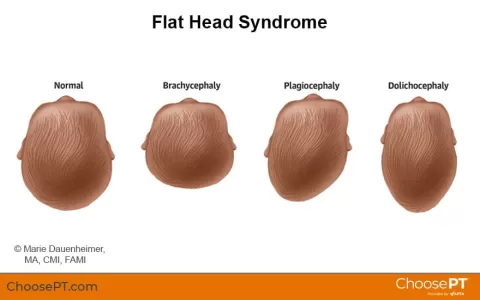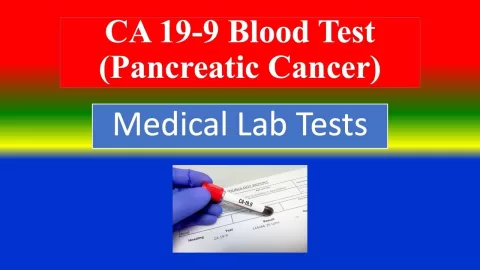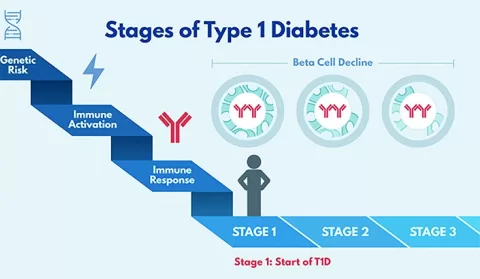Understanding ADHD is essential for grasping the complexities of this prevalent neurodevelopmental disorder that affects millions worldwide. Individuals with ADHD frequently exhibit symptoms such as inattention, hyperactivity, and impulsivity, which can significantly impact their daily lives and relationships. Recent ADHD research has unveiled various causes of ADHD, ranging from genetic predispositions to environmental influences, prompting a reevaluation of diagnosis and treatment options. This article delves into the key ADHD symptoms, discusses the intricacies of ADHD diagnosis, and explores the latest ADHD treatment options available today. By gaining a comprehensive understanding of ADHD, we can foster a more supportive environment for those affected by the disorder.
Attention Deficit Hyperactivity Disorder, often referred to as ADHD, encompasses a range of behavioral and cognitive challenges that are critical to recognize. Commonly described as attention issues, hyperactive tendencies, and impulsive behaviors, this condition affects both children and adults alike. The roots of this disorder are multifaceted, influenced by a combination of genetic factors, environmental exposures, and developmental aspects. Understanding the nuances of ADHD, including its symptoms, diagnosis processes, and evolving treatment strategies, can empower individuals and families to navigate the complexities of living with this condition. As we explore the various dimensions of ADHD, we uncover the potential for improved outcomes and quality of life for those impacted.
Understanding ADHD Symptoms: A Comprehensive Overview
ADHD symptoms can manifest in various ways, making it essential to understand the core characteristics of this disorder. Primarily, ADHD is divided into two categories: inattention and hyperactivity-impulsivity. Individuals with inattention may struggle to focus on tasks, leading to careless mistakes and difficulties in organizing activities. Hyperactive individuals often display excessive movement, find it challenging to remain seated, and may interrupt others during conversations. Recognizing these symptoms is crucial for early diagnosis and intervention.
In a classroom setting, for example, a child exhibiting inattention may frequently daydream or lose track of assignments, while a hyperactive child may disrupt lessons by talking out of turn or moving around excessively. Understanding these symptoms helps parents and educators identify potential ADHD cases, paving the way for timely assessments and interventions that can significantly improve the child’s academic and social experiences.
Recent Research Insights on ADHD Treatment Options
Recent studies have highlighted innovative treatment options for managing ADHD symptoms effectively. One notable finding is the potential use of repurposed medications, such as amlodipine, traditionally used for hypertension, showing promise in alleviating ADHD symptoms. This breakthrough suggests that treatments could be more accessible and diverse, providing alternatives for those who do not respond well to conventional stimulant medications.
Additionally, ongoing research emphasizes the importance of early intervention. Studies indicate that early diagnosis and treatment of ADHD can prevent secondary issues, such as smoking in youth. By understanding the link between timely ADHD treatment and the reduction of associated risks, healthcare providers can better advocate for proactive approaches that address ADHD symptoms before they escalate into more significant behavioral problems.
Exploring the Causes of ADHD: Genetic and Environmental Factors
The causes of ADHD are multifaceted, encompassing genetic and environmental influences. Research suggests that genetics play a significant role, with family history being a strong indicator of risk. Children with relatives who have ADHD are more likely to develop the disorder themselves. This genetic predisposition highlights the need for awareness within families, as early detection can lead to appropriate interventions.
In addition to genetics, environmental factors such as prenatal exposure to harmful substances also contribute to the risk of developing ADHD. For instance, studies have associated the use of acetaminophen during pregnancy with an increased likelihood of ADHD symptoms in children. Understanding these causes not only aids in recognizing at-risk populations but also informs preventative strategies, ensuring better outcomes for future generations.
ADHD Diagnosis: Key Assessments and Evaluation Methods
Accurate ADHD diagnosis involves a comprehensive assessment process that includes multiple evaluation methods. Clinicians typically conduct clinical interviews with parents and teachers to gather insights about the child’s behavior across different settings. Behavioral rating scales are employed to quantify symptoms, while observations in both structured and unstructured environments provide context to the reported behaviors.
Cognitive testing is another critical component of the diagnostic process. It helps assess executive function and learning capabilities, which are often impacted in individuals with ADHD. By utilizing a combination of these methods, healthcare professionals can arrive at a well-rounded diagnosis, enabling them to develop tailored treatment plans that address the unique needs of each individual.
The Impact of ADHD: Long-Term Effects and Management Strategies
ADHD can significantly impact various aspects of an individual’s life, from academic performance to personal relationships. Research indicates that untreated ADHD can lead to long-term challenges, including difficulties in maintaining employment and increased risk of substance abuse. Awareness of these potential outcomes underscores the importance of effective management strategies that can mitigate these risks.
Long-term studies of individuals treated with ADHD medications reveal that many experience positive outcomes, such as improved focus and social interactions. However, it’s essential to evaluate the effectiveness of these treatments continuously, as what works for one individual may not be suitable for another. By remaining informed about the latest ADHD research and treatment options, patients and healthcare providers can work collaboratively to establish management plans that foster successful and fulfilling lives.
Frequently Asked Questions
What are the common symptoms of ADHD that help in understanding ADHD better?
Understanding ADHD symptoms is essential for accurate diagnosis and effective treatment. Common symptoms include inattention, such as difficulty sustaining focus and frequent mistakes in tasks, as well as hyperactivity-impulsivity, which involves fidgeting, difficulty remaining seated, and interrupting others. For a complete list of ADHD symptoms, refer to reputable resources like the CDC.
What are the known causes of ADHD that researchers have identified?
Research into the causes of ADHD suggests that it arises from a combination of genetic, environmental, and neurological factors. Key elements include genetic predisposition, prenatal exposure to substances like acetaminophen, and environmental factors such as lead exposure during early childhood. These insights are vital for understanding ADHD and its development.
How is ADHD diagnosed, and what assessments are used in the process?
Understanding ADHD diagnosis involves comprehensive assessments, including clinical interviews with parents and teachers, behavioral rating scales, observations in different settings, and cognitive testing. This thorough evaluation process helps ensure an accurate diagnosis and informs appropriate treatment options.
What recent research has been conducted to improve ADHD treatment options?
Recent ADHD research has yielded promising findings, such as the potential for the blood pressure drug amlodipine to manage ADHD symptoms effectively. Additionally, studies emphasize the importance of early diagnosis and treatment to mitigate long-term risks, such as smoking in youth. Staying updated with ADHD research can help individuals access the most effective treatment options.
How does ADHD affect individuals in their daily lives, according to recent studies?
Understanding ADHD’s impact on daily life is crucial. Individuals with ADHD may face challenges in academic, social, and work environments due to symptoms of inattention and impulsivity. Recent studies highlight the importance of timely diagnosis and treatment, as addressing ADHD symptoms early can lead to better life outcomes and improved management strategies.
| Key Points | Details |
|---|---|
| Understanding ADHD | ADHD is a common neurodevelopmental disorder affecting both adults and children, characterized by inattention, hyperactivity, and impulsivity. |
| Recent Research Insights | Recent studies suggest new treatment options, such as a blood pressure drug (amlodipine), and link maternal acetaminophen use to increased ADHD risk in children. |
| Symptoms of ADHD | Symptoms include inattention (e.g., difficulty sustaining attention) and hyperactivity-impulsivity (e.g., fidgeting, interrupting others). |
| Diagnosis and Assessment | Diagnosis involves clinical interviews, behavioral rating scales, and cognitive testing to evaluate symptoms in various contexts. |
| Potential Causes | ADHD is believed to arise from genetic, environmental, and neurological factors, including prenatal medication exposure and early childhood environment. |
Summary
Understanding ADHD is essential for recognizing the complexities of this disorder. ADHD impacts various aspects of life, from academic performance to social interactions, and its symptoms can significantly affect daily functioning. Ongoing research continues to provide valuable insights into effective treatments and the underlying causes of ADHD, helping to enhance the lives of those affected by it. By staying informed about the latest findings and understanding the symptoms and potential risk factors, individuals and healthcare providers can work together to create effective management strategies tailored to the unique needs of each person with ADHD.
The content provided on this blog (e.g., symptom descriptions, health tips, or general advice) is for informational purposes only and is not a substitute for professional medical advice, diagnosis, or treatment. Always seek the guidance of your physician or other qualified healthcare provider with any questions you may have regarding a medical condition. Never disregard professional medical advice or delay seeking it because of something you have read on this website. If you believe you may have a medical emergency, call your doctor or emergency services immediately. Reliance on any information provided by this blog is solely at your own risk.







